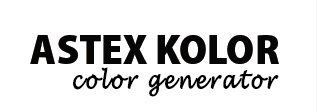Self-leveling screed
Self-leveling screed designed for manual or machine smoothing, leveling and equalizing of floors, concrete floors, screeds, dry floors indoors.
- Thickness from 5 to 30 mm
- For underfloor heating
- High durability
- For substrates ceramic tiles, carpets, panels
Calculate expenditure
Expenditure
1.5 kg / m² at a thickness of 1 mm
Shell life
12 months from the date of production
Packaging
25 kg
Application
Self-leveling screed is an easy-to-use, factory-prepared dry mix, designed for manual or machine smoothing, leveling of floors, concrete floors, screeds, and dry floors indoors. It is used in small and large-scale construction, such as: residential and utility rooms, warehouses, halls, garages, basements, halls, offices, corridors, etc. After using the screed, we obtain a perfectly even surface for ceramic tiles, floor panels and various types of floor coverings, etc. The screed can be used for underfloor heating. Using a self-leveling screed, we obtain a perfectly smooth surface without the need for guide profiles and mass removal with patches.
Properties
Self-leveling screed is a ready, dry mix of the highest quality, based on gray Portland cement, cleaned sand, aggregates and modifying additives. It has very good self-leveling properties, workability, spreadability, plasticity and adhesion to the substrate, which makes it a product with a very versatile application and easy to process. When mixed with water, it forms a homogeneous mass that is easy to spread. With very high adhesion to the ground. Self-leveling screed is a frost and waterproof product. It is also characterized by high tightness. It also affects the faster pace of construction works.
Substrate preparation
The substrate should be dry, matured, stable, even and sound, i.e. strong enough, cleaned of layers that can weaken mortar adhesion (dust, dirt, lime, oils, fats, wax, residual oil and emulsion paint, etc.). Excessive absorption of the substrate should be reduced by using UNI¬ASTEX priming emulsion. Repeat the procedure for a substrate with increased water absorption. It is unacceptable to leave too much primer on the surface. If it is necessary to make a layer on solid substrates with a load capacity difficult to determine (e.g. dusty, difficult to clean), it is recommended to perform an adhesion test consisting in applying a control layer and checking the connection after a minimum of 48 hours. Loose items must be removed. It is absolutely necessary to use expansion profiles separating the wall (in the form of sealing tapes or polystyrene from 5 to 10 mm), threshold and around the load-bearing elements of the structure (pillars, chimneys, etc.). All structural expansion joints should be transferred to a self-leveling layer. Above 50 m², use expansion joints. Seal poured floors. Recommended use on surfaces: - cement screed (age over 28 days, humidity below 4%), - concrete (age over 3 months, humidity below 4%) . - mechanically ground and anhydrite primers, dusted (humidity <0.5%).
Mortar preparation
Preparation involves pouring dry mortar into a container with the right amount of water (5L / 25 kg). Then mix the mass mechanically using a low-speed drill with a stirrer (stirrers) or a special aggregate (equipped with a screw feeder and non-aerating mortar) until a homogeneous mass without lumps is obtained. Leave for about 5 minutes and mix again to get the right consistency. The mortar prepared in this way should be used within 30-45 minutes. It is unacceptable to modify the mortar by adding other components of construction chemicals, e.g. sand, cement, as this may cause loss of mortar properties. The use of an insufficient amount of mixing water leads to a decrease in physical and endurance parameters.
Application method
Self-leveling screed is applied manually to a previously primed substrate and the determined future thickness with the help of benchmarks or a level applied to the wall. Spread the freshly poured mortar with a steel float or a scraping strip. The poured mass should be vented with a barbed roller for about 30 minutes. During the drying of the screed, as well as during its maturation, it is absolutely necessary to ensure good ventilation of the rooms, too rapid drying can lead to cracking of the screed. The air and substrate temperature during works as well as during the binding and drying process must be positive from + 5ºC + 25ºC. The work should be carried out constantly until the ground is completely covered. In addition to the recommendations provided, work should be carried out in accordance with building practice and health and safety rules. The manufacturer guarantees the quality of the product, but has no effect on the conditions and the way it is used. In case of doubt, carry out adhesion tests or contact a representative of Astex Puczyński Plasters Adhesives Paints. Amount of water per 25kg pack: 5 liters
Expenditure
On average, 1.5 kg is used for 1 m² of floor with a layer thickness of 1 mm.
Tools
Drill with an agitator, agitator, squeegee, barbed roller, cement mixer, aggregate with a screw pump. Tools should be cleaned with clean water directly after use.
Packaging
25 kg paper bags. Pallet: 54 bags,25 kg each, 1350 kg overall per pallet.
Storage and transport
The products must be absolutely stored in undamaged packaging and dry rooms on pallets. Protect from moisture, getting wet during storage and transport. The storage period of the product in conditions complying with the recommendations given is up to 6 months from the date of production placed on the packaging in digital print. The date of production, which is placed on the packaging, is also the date of manufacture of the product. Any changes visible in the product or packaging structure without special tests, in particular discoloration or smudging of the packaging graphics, infringements of the packaging continuity, biological changes in the product structure, recognizable in particular as a consequence of moisture, may indicate poor storage or transport conditions and do not guarantee compliance declared performance characteristics of products as specified.
Temperature of performed work
Air temperature from +5 to + 25ºC. Substrate temperature from +5 to + 25ºC.
Precautions
Irritating product. Appropriate eye, respiratory and skin protection should be used. Keep away from children. Do not breathe dust. In case of contact with eyes, rinse immediately with plenty of water and seek medical advice. If swallowed, seek medical advice immediately and show the container or label.
Do you have questions? Doubts? Ask an advisor Contact form












